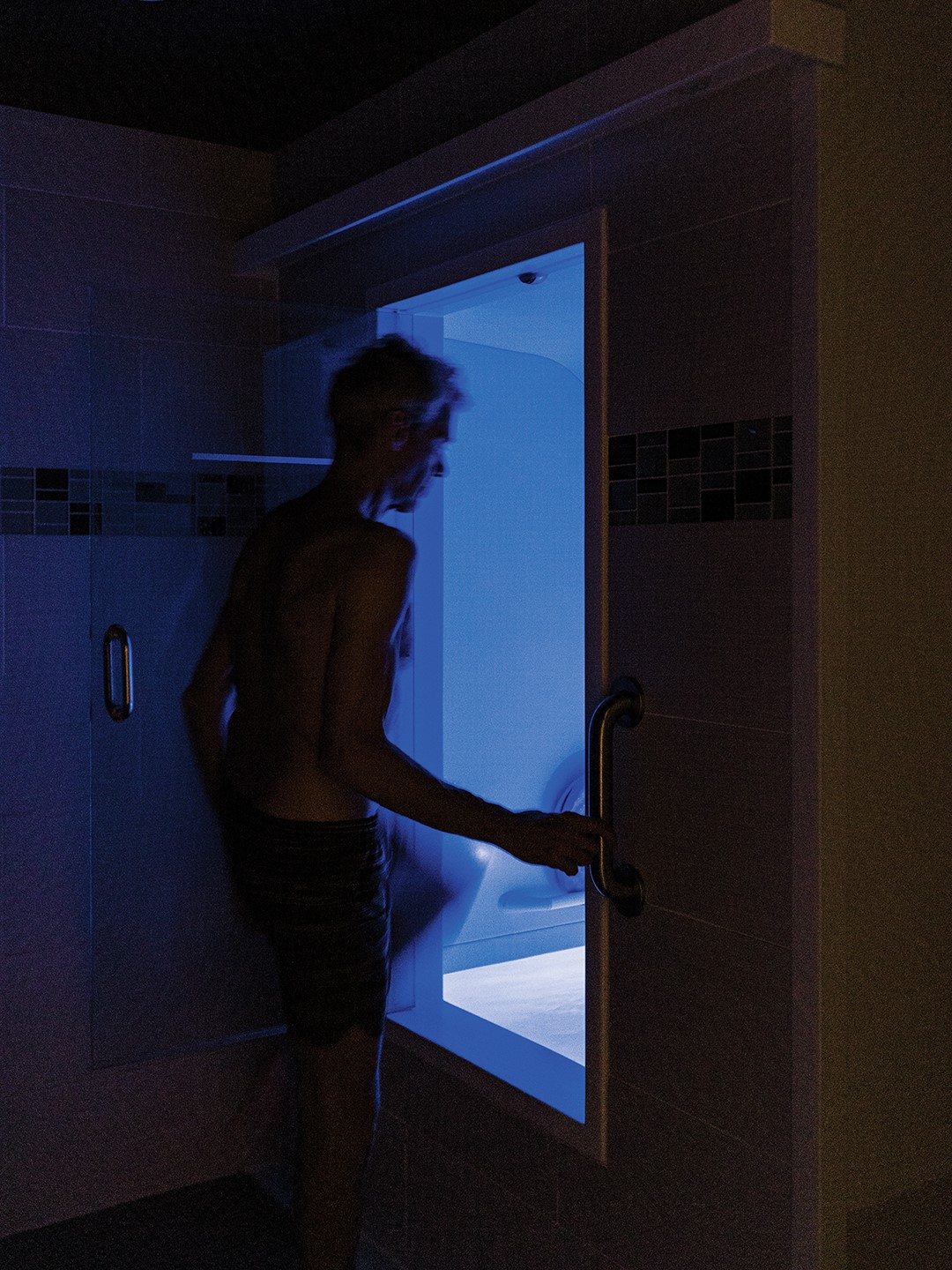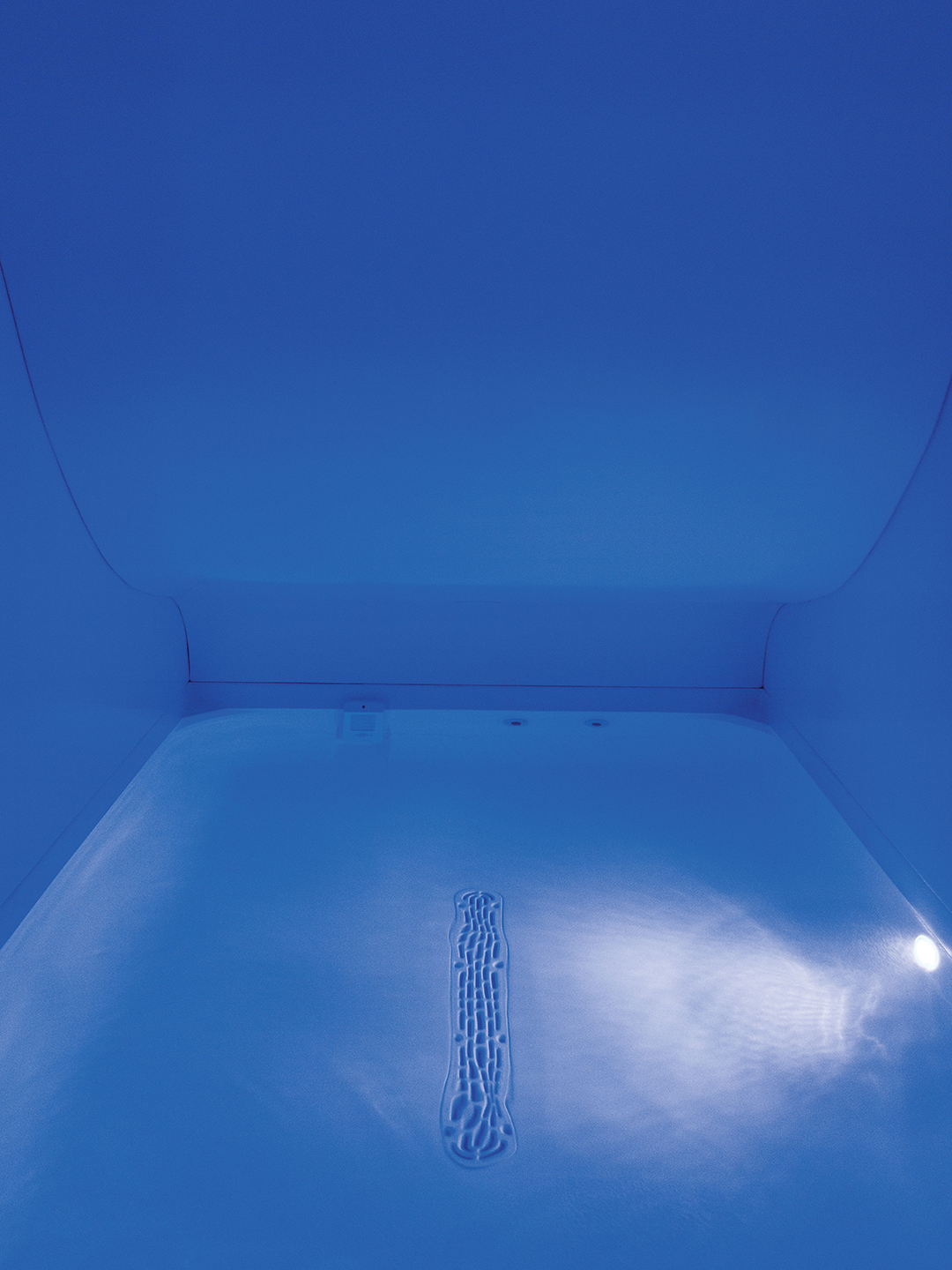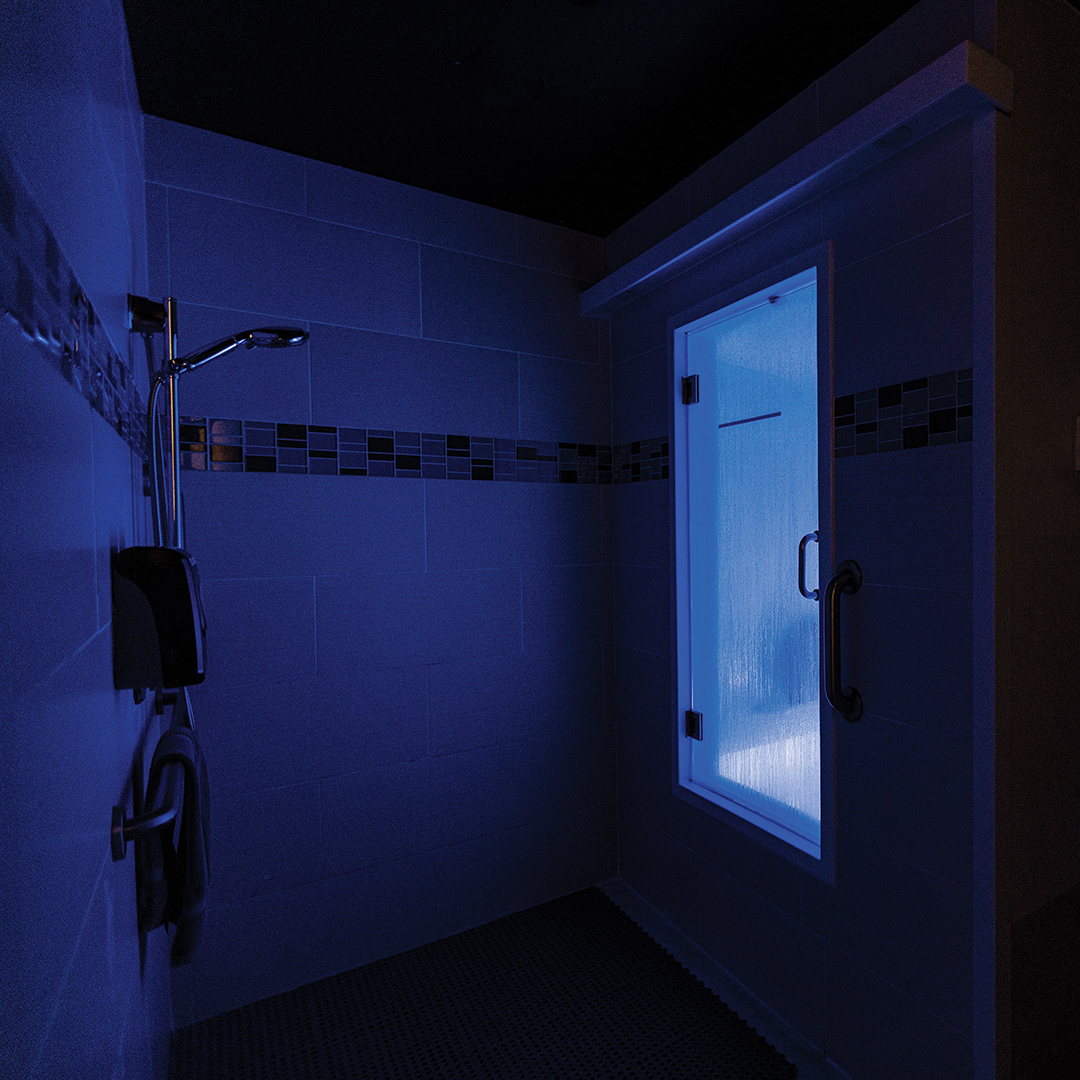
Photos: Chris Emeott
A Minnetonka float spa offers sensory deprivation therapy to support bodies and minds.
Call it what you want—float therapy, reduced environmental stimulation therapy or sensory deprivation—but floating in a warm pool of salty water can offer health benefits for almost anybody willing to take the (shallow) plunge. When Sanctuary Float Spa opened in Minnetonka in 2018, the team wanted to offer floats as a fresh alternative to traditional spa treatments (though you can also book a massage).
Abby Sather is the manager at Sanctuary and has been a dedicated “floater” for six years. “One of the main benefits is pain relief,” she says. Because the water in the float chamber is so full of Epsom salt, it’s extremely buoyant, meaning that there’s no impact on joints and muscles as you’re lifted by the water. “It’s also just a great way to decompress from the hustle and bustle of life,” Sather says. “You get to have a moment to yourself and turn everything off for an hour.”

Each of Sanctuary’s float suites includes a private changing area and shower; it’s important to rinse off before the float to avoid bringing contaminants into the water and afterward to eliminate salt from hair and skin. Once ready to begin, guests step into their private pool, which looks like a large shower/tub enclosure and offers ample space for floaters. There’s around 1 to 1-and-a-half feet of water in the pool, but don’t worry about sinking elbows or derrieres: “We have over 1,000 pounds of Epsom salt in the water,” Sather says. “Everything floats easily.”
The water is set to an average human body temperature. Sather says, “It’s temperature neutral, so you don’t feel any difference between the water and air temperature.” Temperature change is one stimulus that float therapy removes; light and sound are others. “The ultimate goal is to do a full sensory-deprivation experience,” Sather says. Floaters, who aren’t quite ready, can opt to keep the soft lighting on or listen to Sanctuary’s soothing, ambient music.
Each pool also has an intercom system, so guests can get in touch with a staff member with the push of a button. At the end of the 60- or 90-minute session, the lights come up gradually to signal it’s time to step out. “Not only is the water very soothing, but you also get that transdermal intake of magnesium” from the Epsom salt, Sather says. “It helps reduce inflammation and improve circulation and cell function.”
Joe Hunziker is a longtime client at Sanctuary and leads an active life. (He does yoga, lifts weights, cycles and swims regularly.) “I firmly believe in the benefit of inhabiting one’s physical being,” Hunziker says. “As such, my body is quite receptive to the healing elements of weightless floating.” On a physical level, he says, floating encourages him to slow down, relax and stretch and adds, “I also enjoy the ability to dial down the sensory stimuli while in the float tank.”

“It’s a practice,” Sather adds. “For some people, it takes three or five floats to get the hang of it. But it can be very meditative, and some people have really spiritual experiences.”
Writer Jennifer Pitterle shares her firsthand and first time float spa experience.
Into the Pool
I am weightless. I could be up near the moon or down in a womblike cave. It doesn’t really matter—I don’t feel, see or hear anything.
What I’m really doing, of course, is floating in a pool at Sanctuary Float Spa in Minnetonka. Manager Abby Sather walked me to my private room and showed me where to find the towels, shampoo and foam float pillows (if I want some extra support for my head or neck). “It’s actually totally safe to fall asleep in the pool,” Sather says. “That’s how buoyant the water is.”
Now that I’m in, I’ve turned off the lights and the music, so I can have the full sensory-deprivation experience. It’s odd at first. But after a while, my thoughts stop racing, and I let my mind wander. I experiment with lifting my hand out of the water to see if I feel that familiar “getting out of the pool” chill, but there’s no temperature change between the water and air. I’d worried about feeling claustrophobic, but it’s not stuffy, and the ceiling of the float pool is plenty high.
The most fascinating part of the float is how quickly it goes by. I could have sworn I’d just spent 10 or 15 minutes in the pool, but when I stepped out and looked at my phone, more than half an hour had passed. That’s pretty common, float aficionado Joe Hunziker tells me later. “Some sessions drift by deliciously slowly. While other times, I’m surprised by the room being illuminated so ‘quickly’ at the conclusion,” he says.

Floating Through History
Although float therapy has grown in popularity over the past several years, its history in the United States dates back to the 1950s when doctors at the National Institute of Mental Health started to research how the human brain would respond to an environment without any external sensory input: no sound, no light and no touches or temperature changes.
According to the Floatation Tank Association, a national nonprofit that guides industry best practices, St. Paul native John C. Lilly, M.D., built a floatation chamber in his lab in 1954 and asked his patients to give it a try. The results? People reported intense relaxation and calm—no scary comatose states, as the researchers had feared. Two of his subjects helped him refine the tank and started their own modern float center in California in 1979. Since then, centers have opened all over the country, featuring larger float chambers and compact “pods” that have made floating more affordable and accessible.
This article is not meant to be a medical recommendation. Check with your health care professional before attempting any health-related therapy.
What’s Your Question?
Here are some lightning-round answers:
Yes, you should float in the nude. “Swimsuits can introduce sand or chlorine to the water,” manager Abby Sather says. “They’re also a distraction on your skin.”
Yes, you should hydrate before and after your float.
And yes, the salty water is kept very clean. “It’s always circulating,” Sather says. “It goes through a nontoxic UV light treatment, an ozone treatment and a hydrogen peroxide drip. It’s low-chemical but highly effective.”
Sanctuary Float Spa
14525 Highway 7 Suite 180, Minnetonka; 952.405.6619
Facebook: Sanctuary Float Spa
Instagram: @sanctuaryfloatspa






















